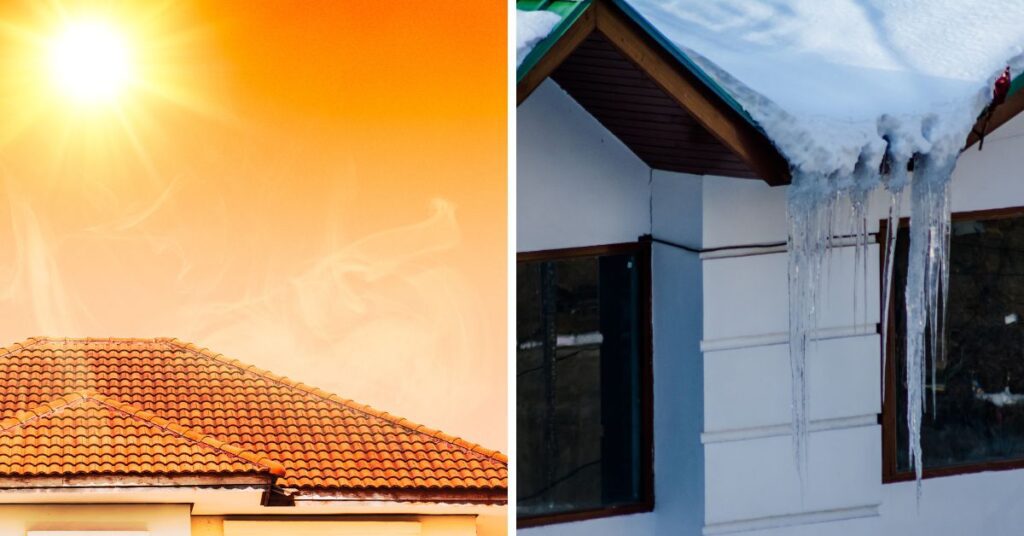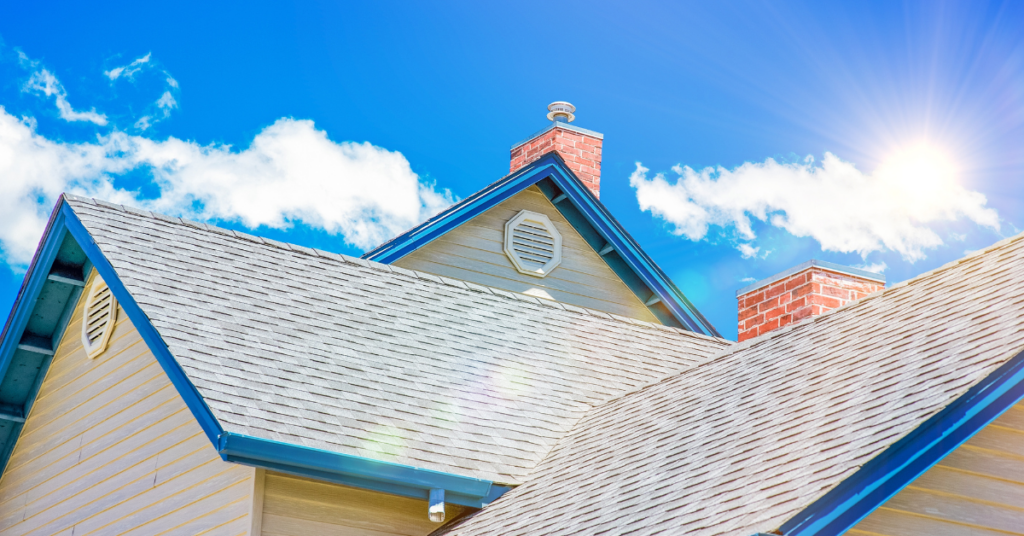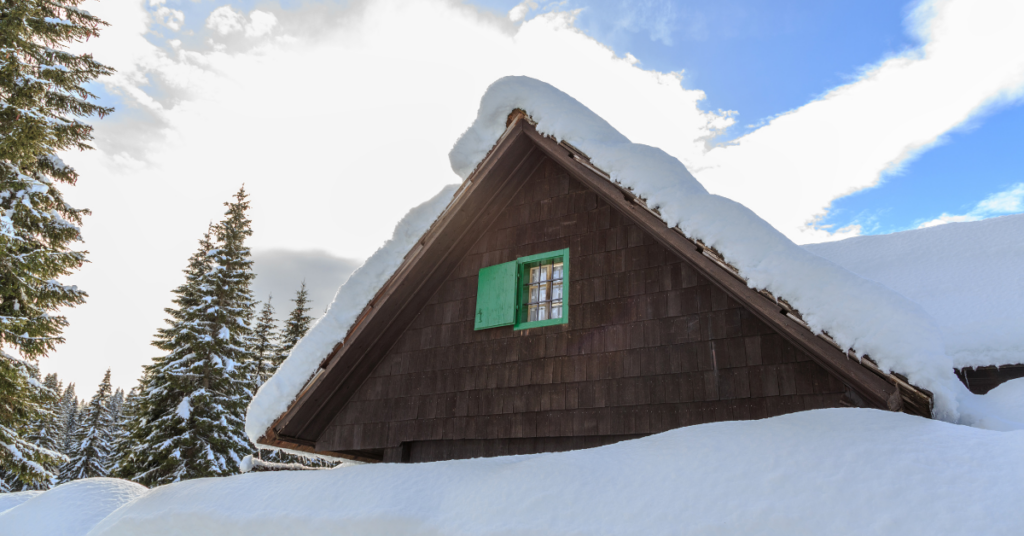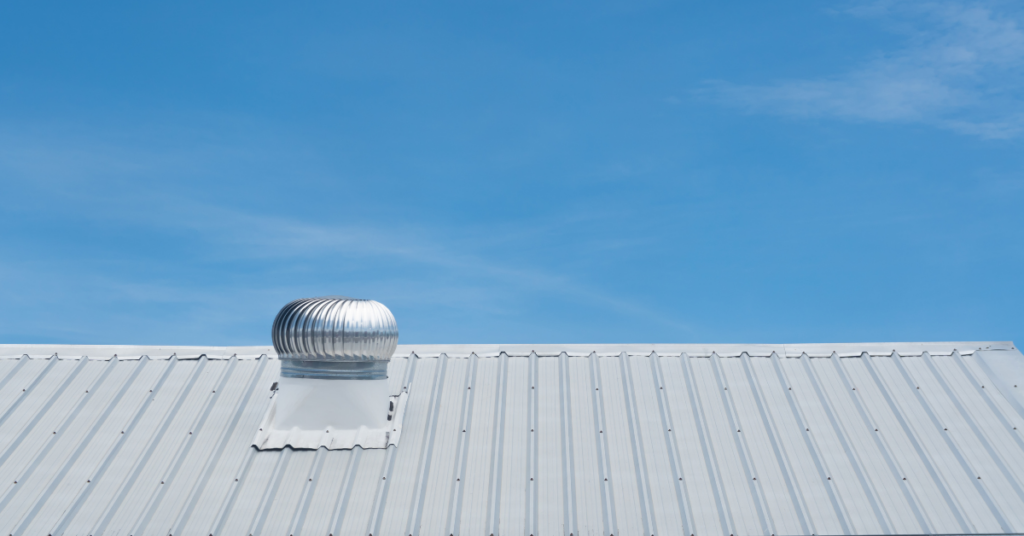Why Would a Roof Being Too Hot or Too Cold Shorten Its Lifespan?


Ever wondered why your roof seems to be aging faster than it should? Many factors contribute to this, and one of the less obvious ones is temperature fluctuations. You might not realize it, but your roof’s lifespan could be significantly affected by it being too hot or too cold. But why is this so? Let’s dive deeper and find out.
Impact of High Temperatures on Roofs
High temperatures can cause severe damage to your roof, affecting its lifespan.
Material Expansion and Contraction
Roofing materials tend to expand in high heat and contract when it cools down. This constant expansion and contraction can lead to cracks, warping, and other forms of damage, reducing the roof’s lifespan.
Solar Radiation and Ultraviolet (UV) Damage
Exposure to high levels of solar radiation and UV rays can cause roofing materials to deteriorate over time, leading to a reduced lifespan.


Impact of Low Temperatures on Roofs
Low temperatures also pose a threat to the lifespan of your roof.
Ice Dams and Water Damage
In cold weather, ice dams can form on your roof. These dams can cause water to back up and seep under the roof materials, leading to leaks and water damage. It’s important to know how to deal with such issues, especially during winter.


Material Brittleness
Roofing materials can become brittle in cold temperatures, making them more susceptible to damage. When materials are brittle, they’re less able to withstand physical impacts, leading to cracks or breaks. You might want to consider which roofing materials last the longest in these conditions.
Techniques for Balancing Roof Temperature
While we can’t control the weather, we can certainly take steps to minimize its impact on our roofs. Here are some techniques that professional roofers implement to help balance your roof temperature.
Ventilation
Proper ventilation is key to maintaining a balanced roof temperature. A well-ventilated roof allows hot air to escape during summer and helps prevent ice dam formation in winter. To better understand the terms associated with roofing and ventilation, check out our glossary of 16 roofing terms you need to know!


Insulation
Insulation works hand in hand with ventilation to regulate roof temperature. It helps keep your home warm in winter and cool in summer, reducing the strain on your roof. This is one of the reasons why installing metal roofing is a good idea, as they are highly insulative.
Reflective Coatings
Reflective roof coatings are a great way to protect your roof from high temperatures. They reflect sunlight, reducing the amount of heat absorbed by the roof.
Conclusion
In conclusion, both high and low temperatures can negatively impact your roof’s lifespan. By understanding these effects and taking proactive steps, you can protect your roof and extend its lifespan. If you are curious about what to expect, you might be interested in learning about the expected lifespan of a new roof. Remember, a well-maintained roof is not only an investment in your home but also for your peace of mind.
Don’t Let Your Roof Become A Victim of Weather Extremities
Take a proactive stance today to safeguard your home and peace of mind. Visit our city pages to get a local touch on roofing solutions. Discover personalized tips for temperature control and roof longevity. Find the right professional support to ensure your roof is weather-resilient.
- Burnaby roofers and roofing contractors
- Coquitlam roofers and roofing contractors
- Delta roofers and roofing contractors
- Ladner roofers and roofing contractors
- Langley roofers and roofing contractors
- Maple Ridge roofers and roofing contractors
- New Westminster roofers and roofing contractors
- North Vancouver roofers and roofing contractors
- Pitt Meadows roofers and roofing contractors
- Port Coquitlam roofers and roofing contractors
- Port Moody roofers and roofing contractors
- Richmond roofers and roofing contractors
- Surrey roofers and roofing contractors
- West Vancouver roofers and roofing contractors
- White Rock roofers and roofing contractors
- Vancouver roofers and roofing contractors
Remember, the best defense is a good offense. Don’t let temperature fluctuations wear down your roof and, by extension, your home’s value. Reach out to our trusted roofers in your city. Should you need any further help understanding the temperature effects on your roof, or if you require assistance with roof repair or maintenance, please do not hesitate to contact us.
